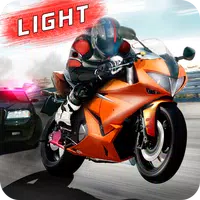For the last couple of generations, AMD has been fiercely competing with Nvidia at the high end of the graphics card market. However, with the launch of the AMD Radeon RX 9070 XT, Team Red has strategically shifted focus from the ultra-high-end RTX 5090 to delivering the best graphics card for the majority of gamers—a goal it triumphantly achieves.
The AMD Radeon RX 9070 XT, priced at $599, goes head-to-head with the $749 GeForce RTX 5070 Ti, positioning it as one of the best GPUs available today. What makes it even more compelling is the inclusion of FSR 4, marking the first time AMD has brought AI upscaling to its graphics cards. This feature makes the RX 9070 XT the go-to choice for 4K gaming, especially for those not willing to spend $1,999 on the RTX 5090.
Purchasing Guide
The AMD Radeon RX 9070 XT becomes available on March 6, starting at $599. Be aware that prices may vary due to third-party offerings, but aim to find one under $699 for the best value.
AMD Radeon RX 9070 XT – Photos

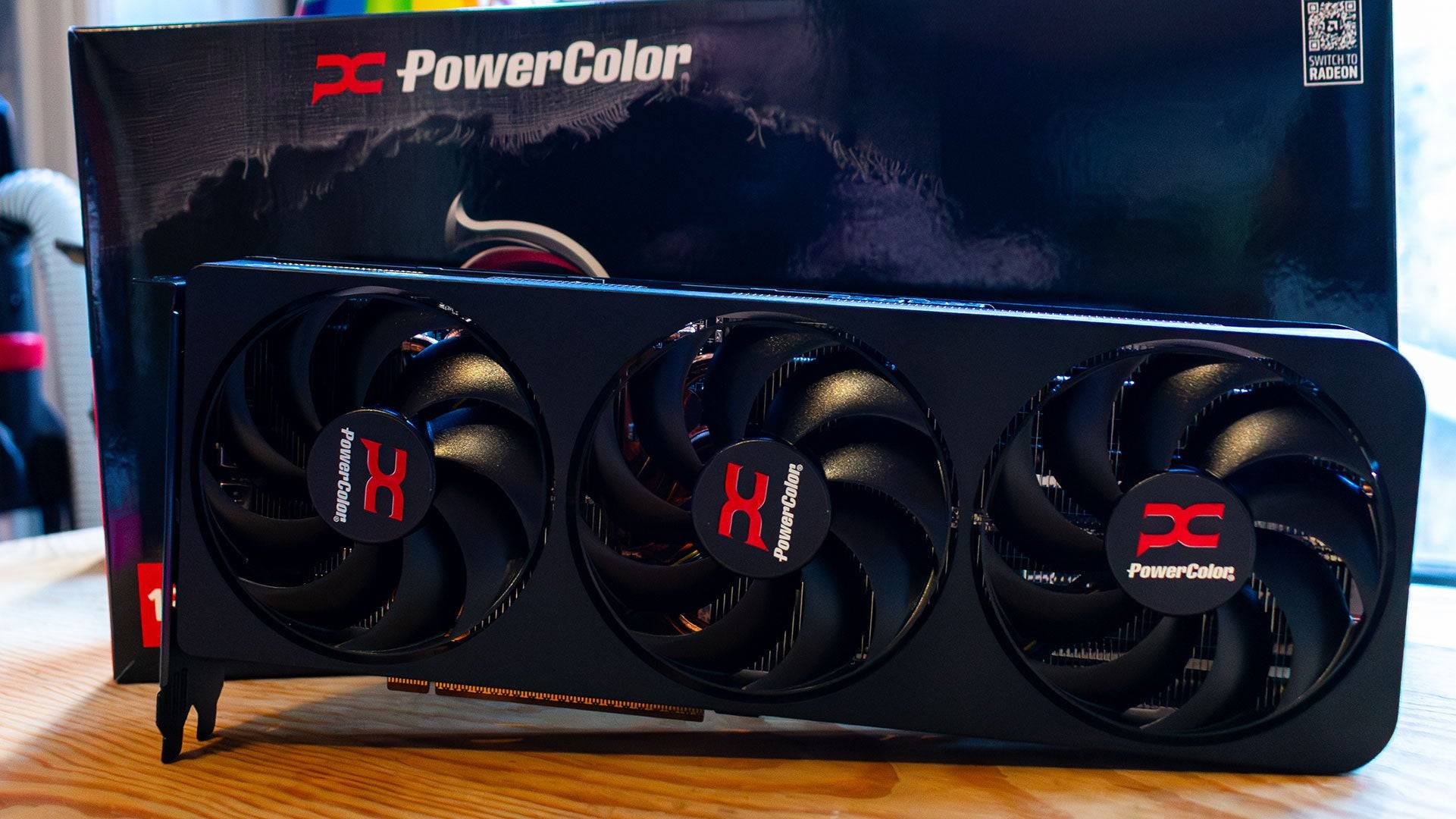 4 Images
4 Images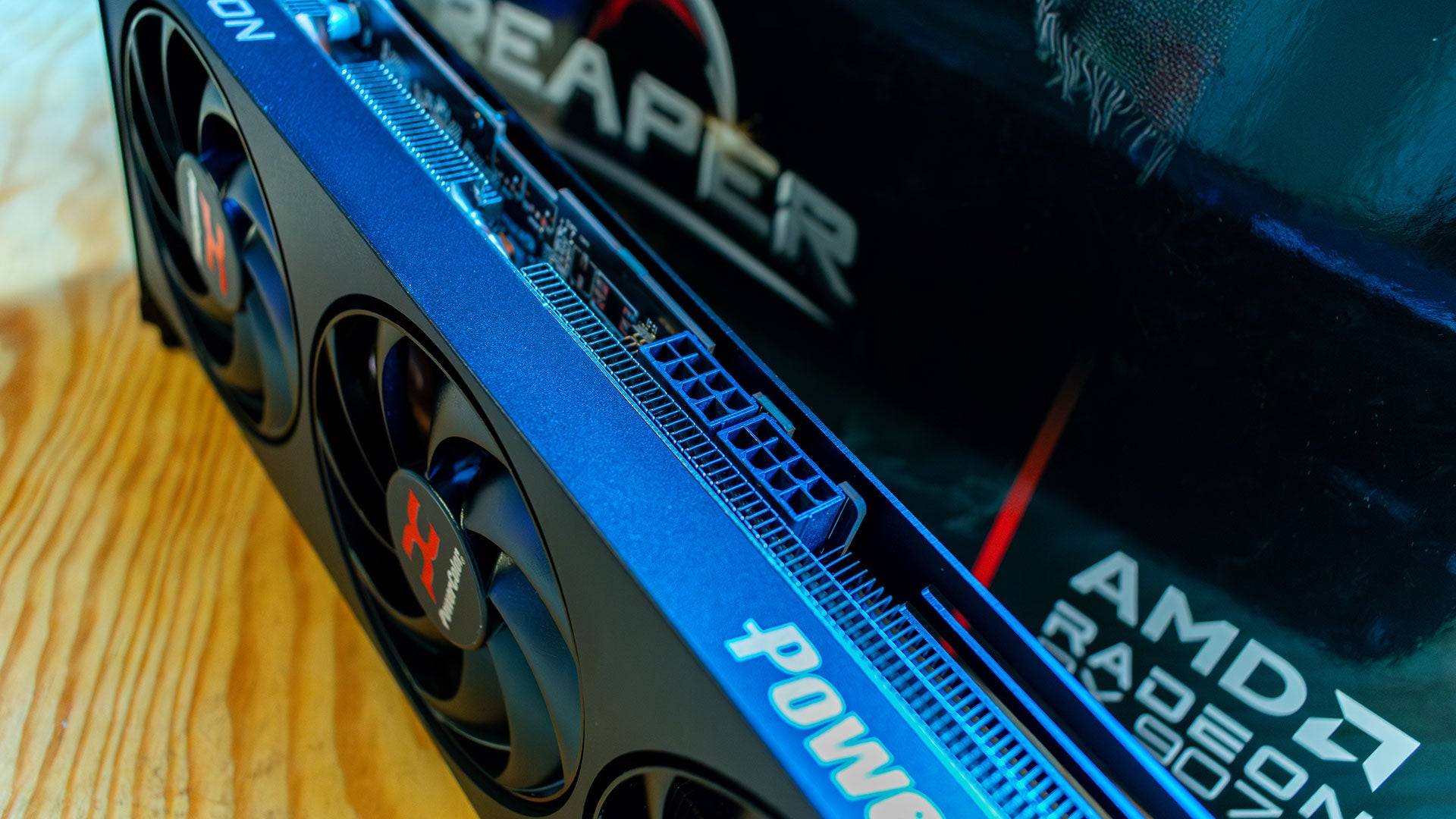
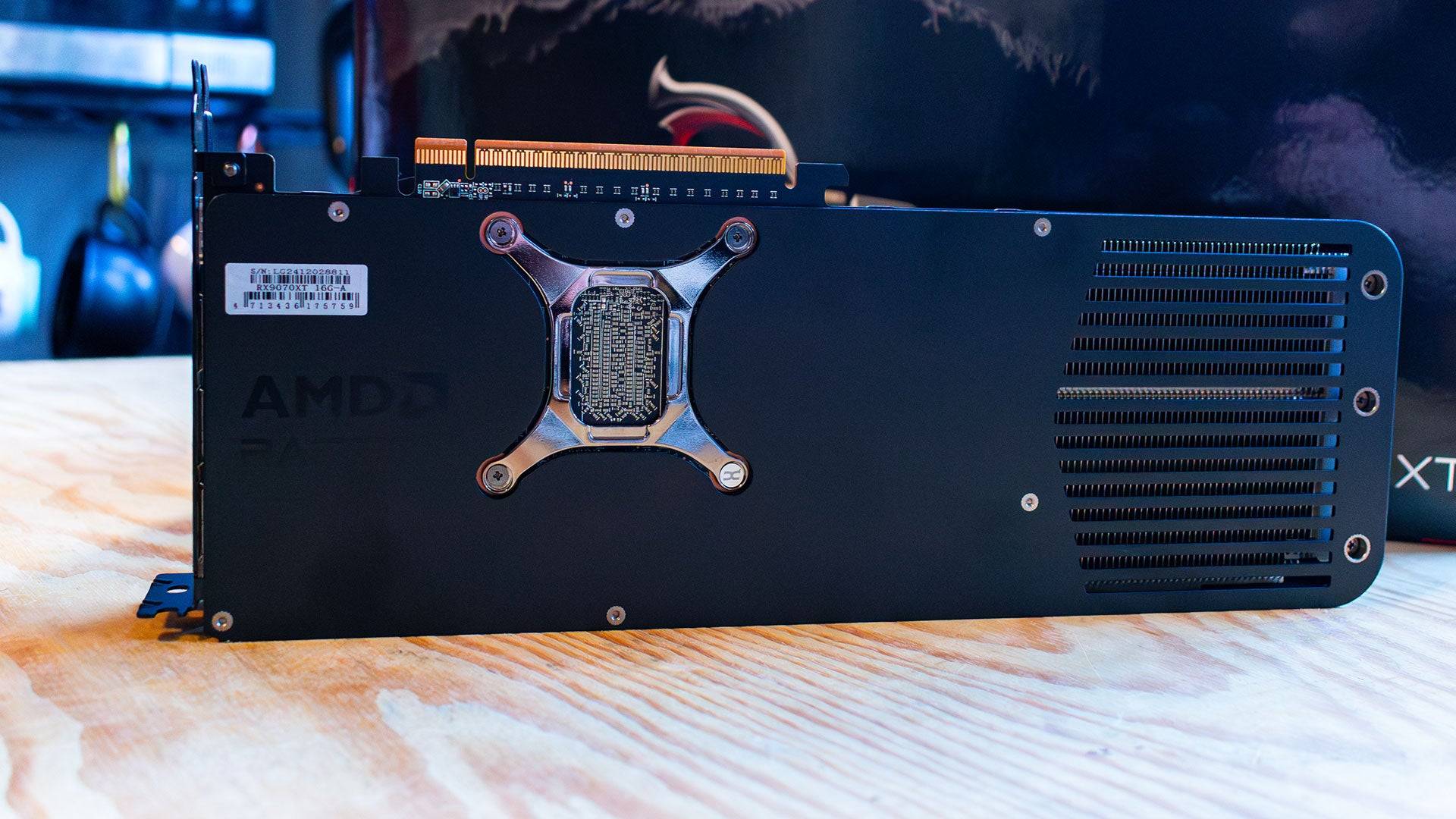
Specs and Features
Built on the RDNA 4 architecture, the RX 9070 XT boasts significant upgrades, particularly in its RT and AI Accelerators. The AI Accelerators are crucial for FidelityFX Super Resolution 4 (FSR 4), introducing AI upscaling to AMD's lineup for the first time. While FSR 4 may not boost frame rates over FSR 3.1, it significantly enhances image quality, offering a toggle in the Adrenalin software for those prioritizing performance over visuals.
Beyond AI upscaling, AMD has refined its shader cores for better per-core performance. Despite having fewer Compute Units (64) than the previous RX 7900 XT (84), the RX 9070 XT delivers a substantial generational performance leap at a more accessible price point. Each Compute Unit contains 64 Streaming Multiprocessors, totaling 4,096, along with 64 ray accelerators and 128 AI accelerators.
However, the RX 9070 XT comes with less memory than its predecessor, featuring 16GB of GDDR6 on a 256-bit bus, compared to 20GB on a 320-bit bus in the RX 7900 XT. This reduction impacts both capacity and bandwidth, yet it remains sufficient for most 4K gaming needs.
The new architecture is more efficient, though the RX 9070 XT requires a slightly higher power budget of 304W compared to the RX 7900 XT's 300W. Interestingly, my tests showed the RX 7900 XT consuming more power, peaking at 314W versus the RX 9070 XT's 306W.
Cooling the RX 9070 XT is straightforward, but AMD has opted not to release a reference design, leaving it to third-party manufacturers. I reviewed the Powercolor Radeon RX 9070 XT Reaper, which features a compact triple-fan design, effectively maintaining temperatures at 72°C during my tests.
The RX 9070 XT uses standard power connectors, requiring two 8-pin PCI-E connectors, making it an easy upgrade for most users with a recommended 700W power supply. Connectivity includes three DisplayPort 2.1a and one HDMI 2.1b, though a USB-C port would add more versatility.
FSR 4
For years, AMD has sought an AI upscaling solution to rival Nvidia's DLSS. With the RX 9070 XT, FSR 4 addresses previous shortcomings in image quality, utilizing AI accelerators to upscale lower-resolution images to native resolution. While FSR 4 offers superior visuals compared to FSR 3's temporal upscaling, it does come with a slight performance hit.
In Call of Duty: Black Ops 6 at 4K with FSR 3.1 on "Performance," the RX 9070 XT achieved 134 fps, but with FSR 4, it dropped to 121 fps, a 10% performance loss, though with enhanced image quality. In Monster Hunter Wilds, the RX 9070 XT managed 94 fps at 4K with FSR 3 and ray tracing enabled, but this fell to 78 fps with FSR 4, a 20% drop.
FSR 4 is an opt-in feature, easily toggled off in the Adrenalin software if performance is your priority.
AMD Radeon RX 9070 XT & 9070 – Benchmarks
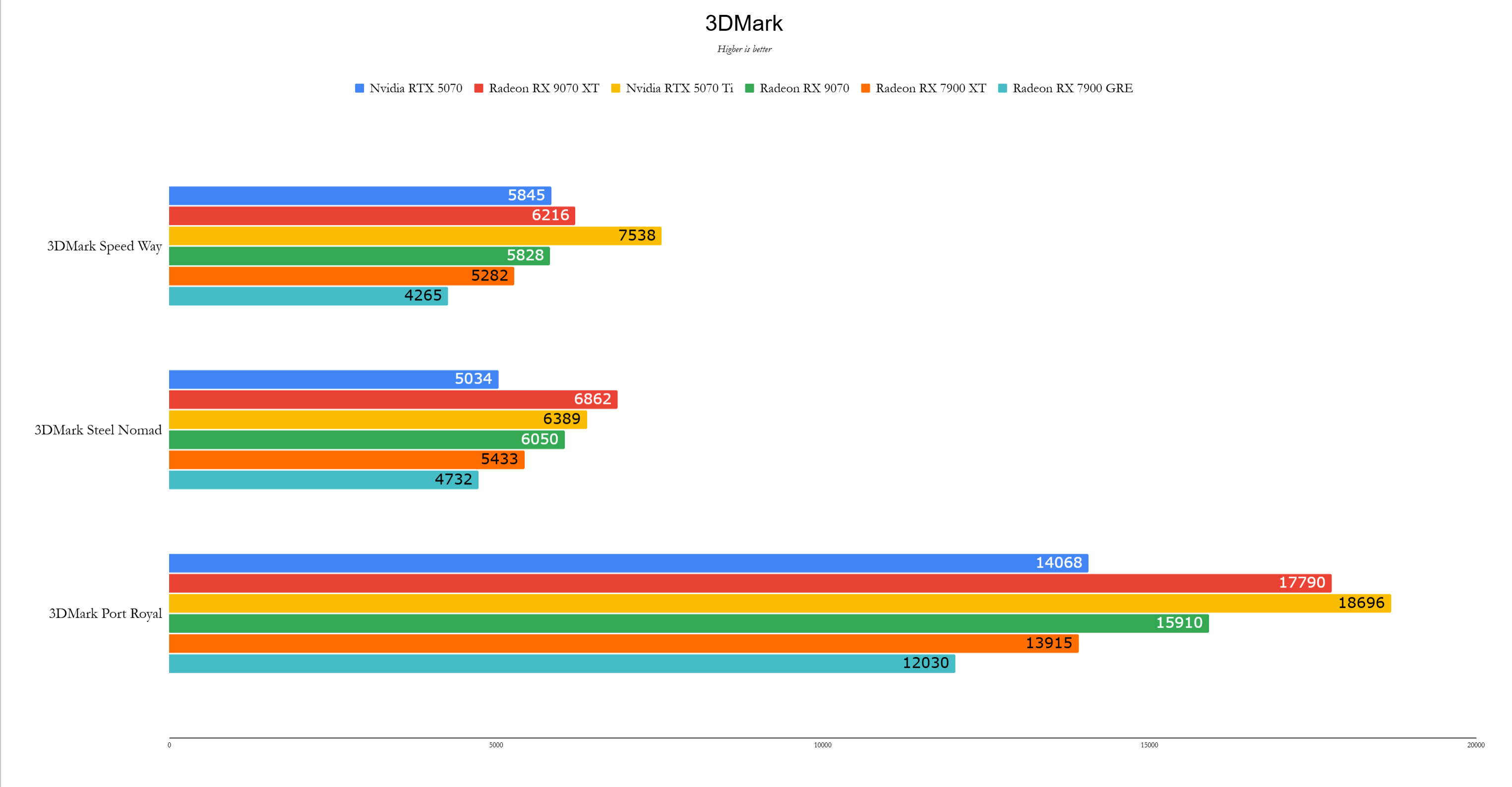
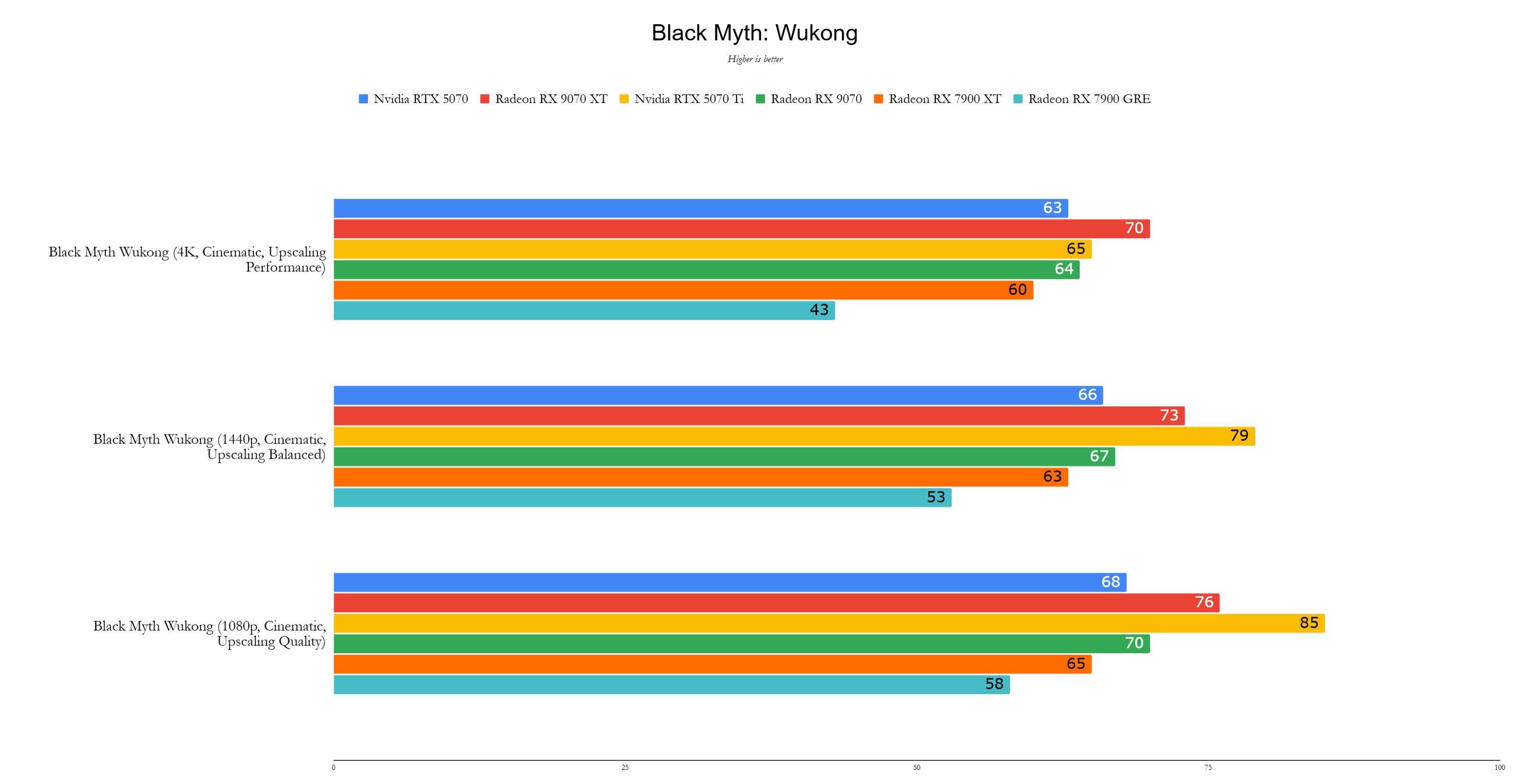 11 Images
11 Images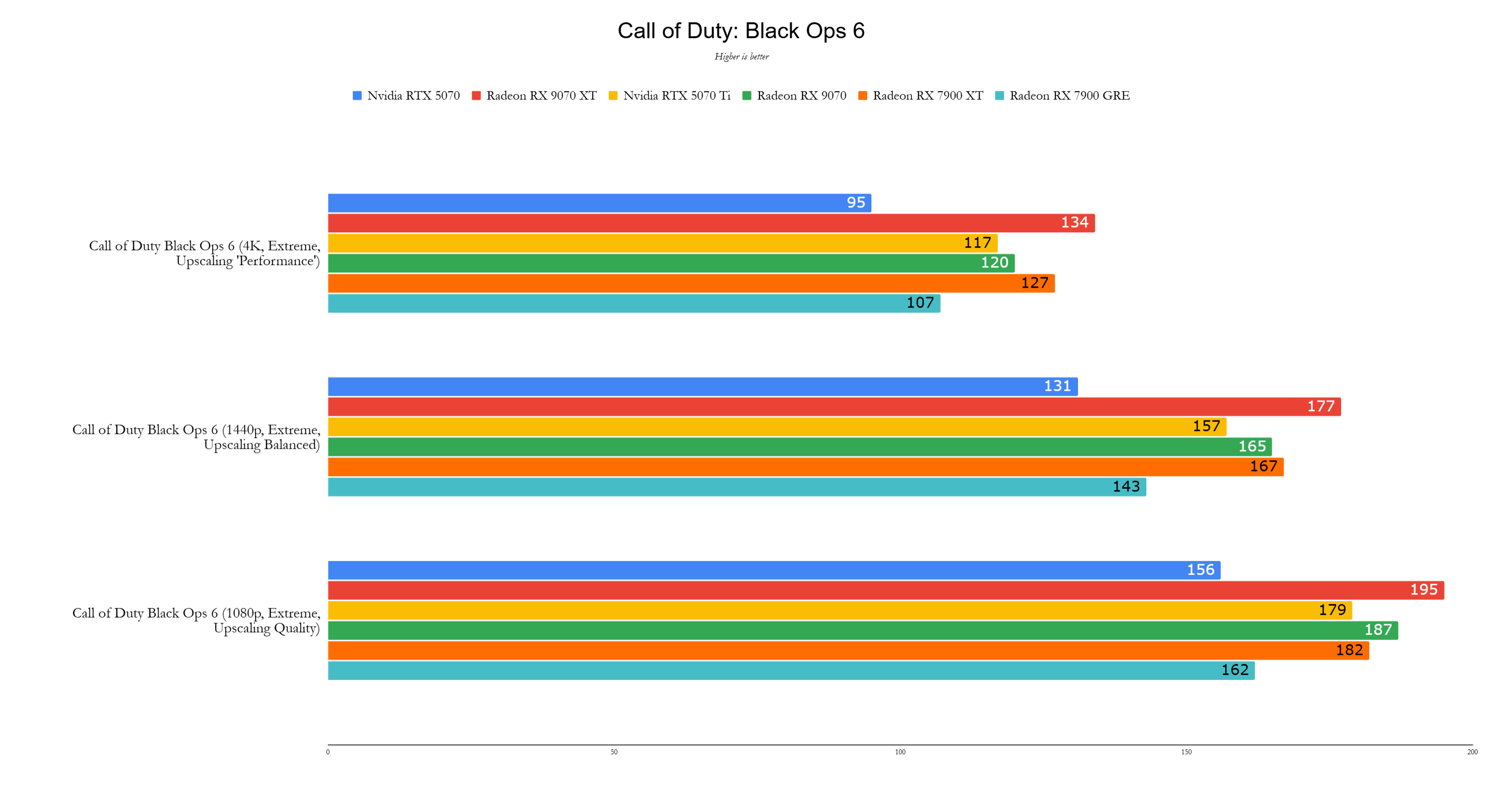
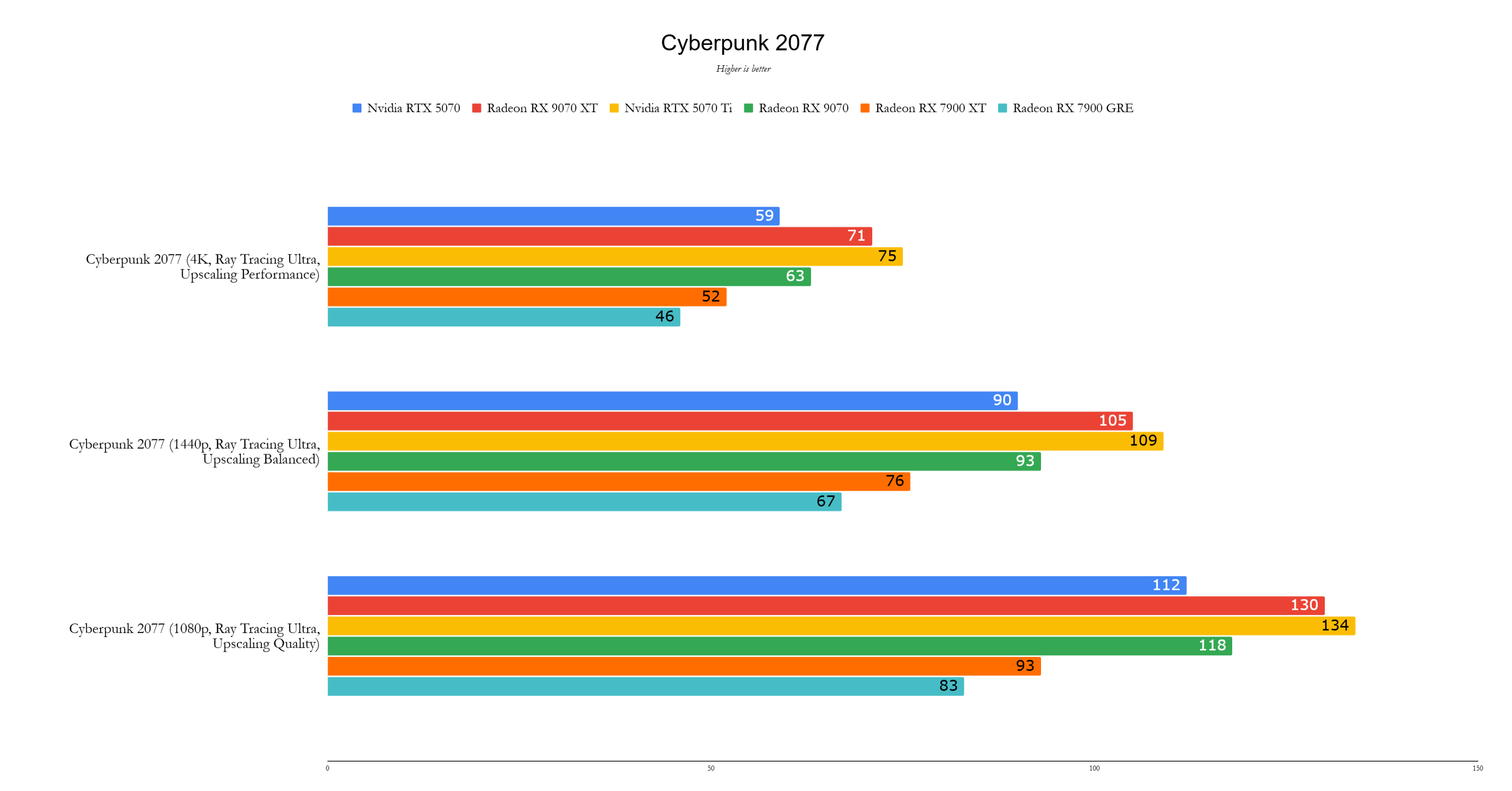
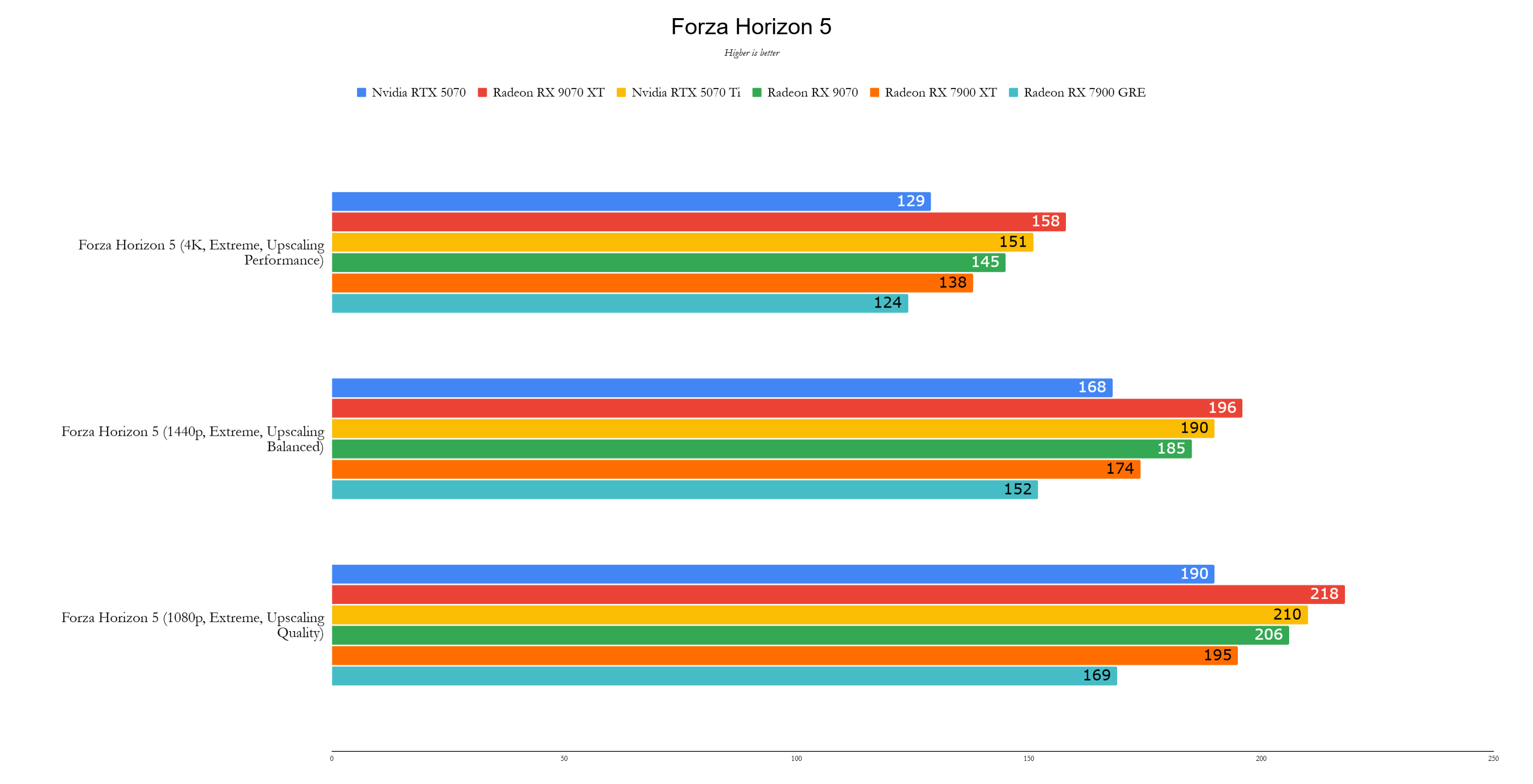
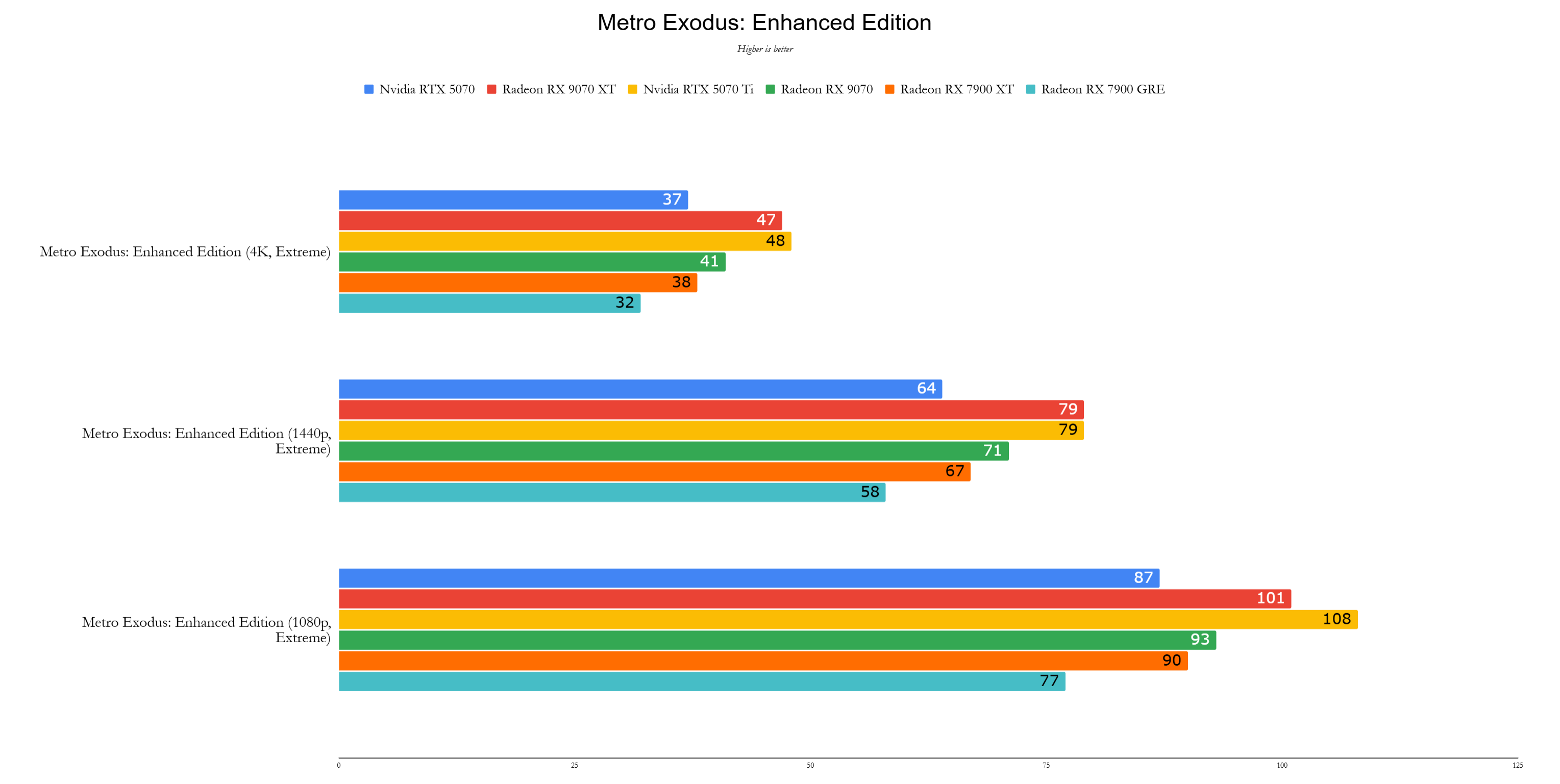
Performance
The Radeon RX 9070 XT, priced at $599, is not only 21% cheaper than the RTX 5070 Ti but also, on average, 2% faster. It outperforms the RX 7900 XT by 17% and excels at 4K, making it the ideal entry-level 4K graphics card, even with ray tracing enabled.
All tests were conducted with the latest drivers: Nvidia's Game Ready Driver 572.60 for all cards except the RTX 5070, which used review drivers, and AMD's Adrenalin 24.12.1 for all AMD cards except the RX 9070 XT and RX 9070, which used pre-release drivers.
In 3DMark's Speed Way, the RX 9070 XT outperformed the RX 7900 XT by 18%, though it lagged 18% behind the RTX 5070 Ti. However, in the Steel Nomad benchmark, the RX 9070 XT's performance improved by 26% over the RX 7900 XT and even surpassed the RTX 5070 Ti by 7%.
Test System
- CPU: AMD Ryzen 7 9800X3D
- Motherboard: Asus ROG Crosshair X870E Hero
- RAM: 32GB G.Skill Trident Z5 Neo @ 6,000MHz
- SSD: 4TB Samsung 990 Pro
- CPU Cooler: Asus ROG Ryujin III 360
In Call of Duty: Black Ops 6, the RX 9070 XT led the RTX 5070 Ti by 15%, showcasing AMD's strength in this title. In Cyberpunk 2077, traditionally an Nvidia stronghold, the RX 9070 XT achieved 71 fps at 4K with Ray Tracing Ultra and FSR 3, while the RTX 5070 Ti managed 75 fps with DLSS, a narrow 5% lead despite the significant price difference.
Metro Exodus, with no upscaling, saw the RX 9070 XT deliver 47 fps at 4K, closely matching the RTX 5070 Ti's 48 fps, while the RX 7900 XT struggled at 38 fps.
Red Dead Redemption 2 highlighted the RX 9070 XT's Vulkan prowess, reaching 125 fps at 4K, outpacing the RTX 5070 Ti's 110 fps and the RX 7900 XT's 106 fps.
In Total War: Warhammer 3, the RX 9070 XT fell 13% behind the RTX 5070 Ti, with 76 fps compared to 71 fps for the RX 7900 XT.
Assassin's Creed Mirage saw the RX 9070 XT reclaim its lead, achieving 163 fps at 4K, outperforming the RTX 5070 Ti's 146 fps by 12% and the RX 7900 XT's 150 fps by 9%.
The RX 9070 XT's most impressive win was in Black Myth Wukong, achieving 70 fps at 4K with the Cinematic Preset and FSR at 40%, beating the RTX 5070 Ti's 65 fps by 8%. This performance showcases the significant improvements in AMD's Ray Accelerators over RDNA 3.
Forza Horizon 5 demonstrated the RX 9070 XT's competitiveness, achieving 158 fps at 4K, surpassing the RTX 5070 Ti's 151 fps by 5%.
Announced quietly at CES 2025, the Radeon RX 9070 XT feels like AMD's strategic counter to Nvidia's Blackwell graphics cards. Priced at $599, it brings a sense of balance to the market, offering flagship performance without the exorbitant cost of the RTX 5080 or RTX 5090. While not the fastest card on the market, the RX 9070 XT feels like a return to the days of the GTX 1080 Ti, the last great flagship graphics card at a reasonable price point.






